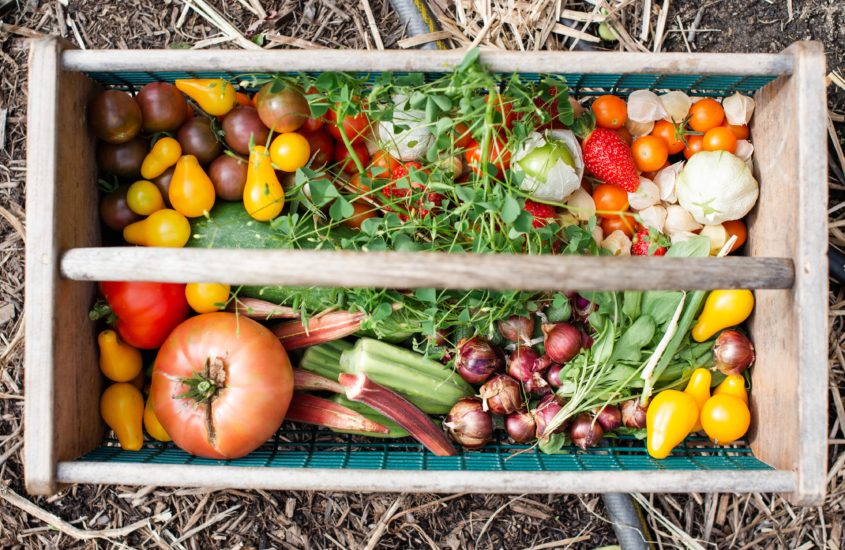Victory Gardens: Preparing for the Unpredictable
AmericanMom Team | PC: Unsplash
PC: UnsplashHistory
“Food will win the war.” -Herbert Hoover
As World War I continued to spread across Europe, America maintained their neutrality until the eleventh hour when, in April of 1917 (just a year and half before the end of the conflict), they joined the effort. Historically, WWI is known as one of the bloodiest wars of the twentieth century and possibly history. The war started so quickly and after such a definitive inciting incident that few had time to truly prepare themselves for what was coming.
To combat this suddenness, and alleviate the damage that entering a war can have on an economy, it became common practice in America to plant a victory garden. This seemingly simple act gained popularity as food shortages and rationing loomed and the pressure to keep up morale at home pressed in.
As a result, the U.S. president at the time, Woodrow Wilson, in conjunction with seed companies urged the American people to create victory gardens to grow their own food. Produce more and consume less – something we’re all trying to get back to (or at least should be) – became the central credo. Seed companies like Burpee’s advertised their seeds with patriotic epithets to help encourage the effort. And Americans took up the challenge. Anyone with very little yard was encouraged to plant where they could – flower beds, pots, etc. – while those with larger yards grew as much as possible and spread the wealth where they could.
As WWI ended, so did the need for large gardens, but when World War II started, a little more than twenty years later, Americans knew exactly what to do: garden. This tradition picked up again as WWII raged, once again alleviating the dependence on a system strained and threatened by international conflict. Additionally, just as before, the victory garden made Americans at home feel as though they were doing their part, helping to win the war by keeping home growing and thriving!
Though a victory garden today may not be part of a war effort, it is a symbol of independence – freedom, if you will – from a delicate system that could change, deflate, or turn on you at any moment.
The Importance of Victory Gardens
According to the Smithsonian Museum, “40% of the nation’s produce was supplied by victory gardens by 1944. American families had grown approximately 8 million tons of food by the time the war ended in 1945.”
The impact of victory gardens was not small. They significantly helped counteract wartime rationing, allowing people to produce, preserve, and share food. Being able to feed your family during the wars was priceless, and being able to produce that food yourself was even more valuable. And because victory gardens were a nation-wide enterprise, they bolstered the collective spirit of the American people as they banded together for a common cause. (We use “collective” cautiously, but there is something to be said for a community, let alone a whole nation, coming together when it is needed. It is evangelism in veggie form.) This collective spirit was probably not seen again until 9/11/2001, and hasn’t been seen in its full force since.
Victory gardens were more than just a way to make sure there was food on the table – they were a way to show a united front when it was needed most. They were the strength of the American people on full show – that independent, we’ll-find-a-way-through, watch us win attitude that had begun growing the minute America was founded. And today, they could be that again, though maybe on a smaller, more microcosmic scale.
Why You Should Start Your Own
Though we are not in a major war, we are always on the cusp of disaster. As much as we don’t like to think about it, food shortages, job loss, war, natural disaster, and other unpredictables are right around every corner. We can’t predict the future, but we can prepare for it. Starting your own victory garden – no matter how small or large – is the best way to take care of your family and make sure you have resources in the future. That being said, starting a garden probably means learning how to can and freeze the foods you grow, so be prepared to dig deep (sorry for the pun) into books and blogs for the information you’ll need to make the most of your crop.
Don’t let the prospect intimidate you – you are capable of amazing things! Starting your own garden will, of course, provide food for you and your family, but it will also reconnect you to nature, get you out in the sunshine digging your hands in dirt. You’ll learn a lot, and find a new sense of self sufficiency and independence. It’ll be an accomplishment unmatched by any other. Plus, you’ll have fresh food right at your fingertips.
How to Start Your Own Victory Garden
There are so many resources out there to help you get started. From blogs to books to Youtube videos and workshops, you’ll have a mountain of information to cull through, but it is all incredibly valuable. Gardening is a fantastic learning opportunity, so hunker down and do some research to help you get started off on the right foot. Below are some great resources for specific areas of gardening.
Getting Started:
Hidden Springs Homestead has a great blog on getting started with gardening and some things to consider, and Julie at the Dogwoods and Dandelions blog goes over a few different kinds of gardens you can start.
Raised gardens:
Raised gardens are great for avoiding weeds, keeping critters out, and creating an easy-on-the-back-and-knees gardening experience. Victory at A Modern Homestead has a great DIY blog on how to put raised gardens together.
Composting:
Composting is something you can essentially start right this minute! Any current food waste can go into an outdoor compost bin, and be added to daily. You can easily learn the basics from and some great tips on composting from blogs and Youtube, but keep in mind that there are multiple methods, so you might need to do some experimenting to see what works best for you.
Additionally, there are some other things to consider like how much to plant, what planting zone you’re in, and how to orchestrate companion planting. But these are all things you can easily learn about and slowly incorporate into your home garden.
There is no right or wrong time to start your own victory garden and liberate yourself from the dependence on grocery stores. But now is the perfect time to take this important step in self sufficiency.
Show us pictures of your victory garden! Head over to Instagram and tag us (@weareamericanmom) in your Instagram Stories to show us how you are taking care of your own in this crazy world.






